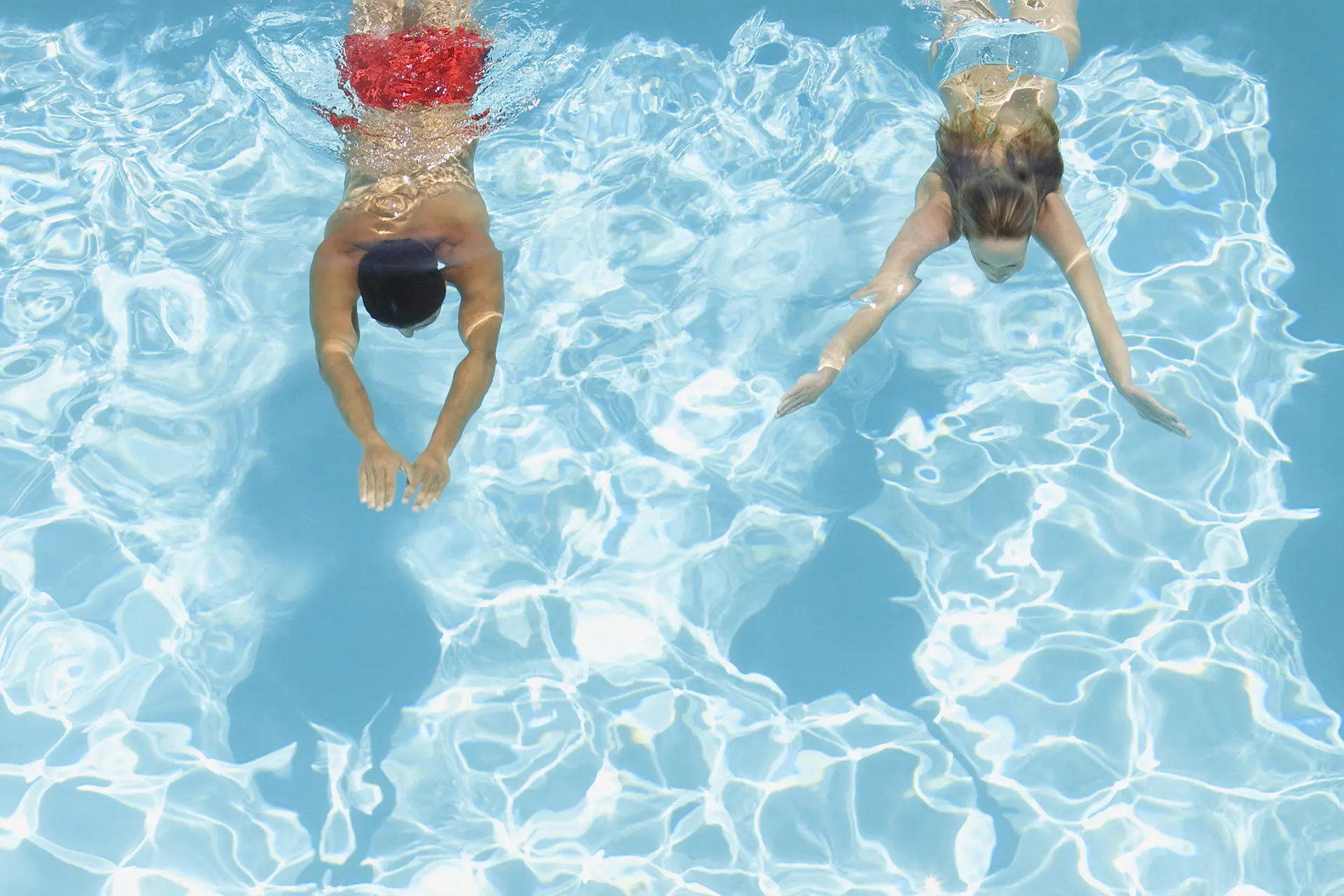
What’s The Best Time to Swim?
Timing Your Swim for the Ultimate Experience
Ever wondered why your morning swim feels so different from an evening dip? Or why some days in the water leave you feeling energized, while others seem to sap your strength? Choosing the best time to swim is like finding the perfect playlist—it sets the tone for your entire experience. The temperature of the water, the atmosphere around you, and even your body’s internal rhythm all shift throughout the day. And while many assume midday is ideal, that may not be the healthiest—or most enjoyable—option.
Whether you’re looking to improve your performance, avoid harsh sun exposure, or simply get more joy out of your swim, discovering the best time to swim can transform your routine. In this guide, we’ll explore how your goals, lifestyle, and the time of day all play a role in creating your perfect swim experience.
Factors to Consider When Choosing the Best Time to Swim
Personal Schedule
Your daily routine is one of the most important factors when deciding when is the best time to go swimming. Work commitments, family responsibilities, and commute times all affect your availability. The best time won’t just fit into your calendar—it should become a consistent habit.
If you can only carve out 30 minutes between dropping off the kids and starting meetings, that might become your golden window. Consistency builds momentum, and a swim that fits seamlessly into your day is one you’ll stick with.
Weather and Season
The weather can dramatically influence your swimming experience. Temperature fluctuations throughout the day affect both air and water comfort levels. In summer, early mornings and evenings offer cooler, more pleasant conditions, while winter swimmers might prefer midday when the sun is at its warmest.
Don’t overlook seasonal hazards either. High UV levels around noon can increase the risk of sunburn, especially in outdoor pools or open water. Sudden storms, wind, or chilly temperatures may also make midday or evening swims less safe or enjoyable.
Swimming Goals
When is the best time to go swimming? That depends on what you want to achieve:
- Cardio training or performance improvement? Morning swims can jumpstart your metabolism and help you stay consistent.
- Stress relief or recovery? Evening or night swims offer a calming environment ideal for relaxation.
- Family fun or social time? Afternoons or weekends may suit your schedule better.
Clarifying your goals helps narrow down the best time of day to swim for your specific needs.
Morning Swimming: Benefits and Drawbacks
Benefits of Morning Swimming
Starting your day with a swim offers a range of physical and mental benefits:
- Peace and quiet: Early mornings are often the calmest times at pools and beaches, with fewer people and minimal distractions.
- Mild UV exposure: The sun is less intense, reducing the risk of sunburn.
- Mental clarity: Exercise in the morning can boost your mood, sharpen focus, and energize you for the day ahead.
- Metabolism boost: Swimming early may help regulate appetite and increase calorie burn throughout the day.
For many, morning becomes the best time to swim simply because it sets a positive tone for everything that follows.
Drawbacks of Morning Swimming
Despite the benefits, early swims aren’t for everyone:
- Colder water temperatures: Especially in unheated pools, mornings can feel brisk.
- Reduced visibility: Dim lighting can create safety concerns, particularly in open water.
- Low motivation: If you’re not a morning person, dragging yourself out of bed for a swim might feel more like a chore than a reward.
Midday Swimming: Pros and Cons
Benefits of Midday Swimming
Midday can be the best time of day to swim for those with flexible schedules:
- Warmer water and air temperatures: This can improve comfort and loosen up muscles, making it easier to stretch and move.
- Ideal for remote workers or retirees: A midday break can be a great way to reset and avoid the afternoon slump.
- Energizing lunch break: A quick swim can refresh your mind and body, enhancing productivity for the rest of the day.
Drawbacks of Midday Swimming
However, midday swimming comes with a few caveats:
- High UV exposure: The sun is strongest between 10 a.m. and 4 p.m., increasing the risk of burns and heat exhaustion.
- Crowded facilities: Pools and beaches tend to be busiest during lunch hours and school breaks.
- Post-lunch fatigue: Eating a large meal before swimming can cause sluggishness or discomfort in the water.
Evening Swimming: A Popular Choice for Wind-Down
Benefits of Evening Swimming
Many find that the best time to go swimming is after the workday ends:
- Stress relief: Swimming in the evening helps release tension and calm the mind.
- Lower sun exposure: As the sun sets, UV levels drop, making it safer for your skin.
- Quieter settings: Public pools and private backyards alike tend to be less crowded in the evening.
The evening swim is often a bridge between the hustle of the day and a restful night.
Drawbacks of Evening Swimming
Still, there are a few things to keep in mind:
- Reduced visibility: Dimming daylight can make it harder to see underwater or spot hazards.
- Potential sleep disruption: For some, exercising too close to bedtime can interfere with falling asleep.
- Cooler water: As temperatures drop, outdoor pools may become chilly and less inviting.
Night Swimming: Unique Appeal and Important Safety Tips
The Appeal of Night Swimming
There’s something magical about swimming under the stars. Night swimming offers a unique combination of tranquility and luxury:
- Romantic atmosphere: Whether alone or with a partner, the ambiance is hard to beat.
- UV-free environment: With no sun exposure, your skin gets a well-deserved break.
- Deep relaxation: The cooler, quieter setting helps muscles unwind and the mind slow down.
Safety Considerations for Night Swimming
That said, night swimming requires extra precautions:
- Lighting: Make sure the pool or surrounding area is well-lit.
- Never swim alone: Always have a swim buddy or let someone know your plans.
- Avoid alcohol: It impairs judgment and increases the risk of accidents.
- Monitor temperature: Cold water can lead to cramps or shock, especially at night.
With the right setup, night swimming can be a safe and serene experience.
How to Choose the Best Time to Swim for Your Lifestyle
Choosing the best time to swim isn’t just about convenience—it’s about alignment with your body, goals, and daily rhythm. Here’s how to find your fit:
- Clarify your purpose: Are you swimming for fitness, fun, therapy, or relaxation?
- Know your energy peaks: Are you most alert in the morning, afternoon, or evening?
- Try different times: Swim at various points in the day and take note of how you feel during and after.
- Adapt to the seasons: Your ideal swim time might shift with daylight hours or temperature changes.
Dive Into Your Perfect Swim Time
There’s no one-size-fits-all answer to the best time to swim. The right time is the one that works for you—physically, mentally, and logistically. Listen to your body, respect your schedule, and prioritize safety. Whether it’s an energizing sunrise dip or a calming moonlit float, the best time to swim is the time that keeps you coming back.
Ready to create a swimming routine that fits your life? Connect with us at All American Pools & Spas to learn more about how we can support your perfect swim experience!

